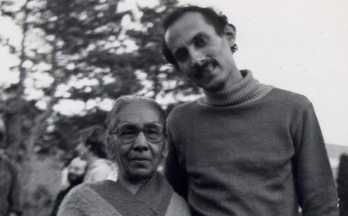Jhana states are two sets of stable states of absorption concentration and insight concentration outlined in Buddhist psychology. These states are so central to the Buddhist world that the word jhana became Chan in China and Zen in Japan.
Entering states of absorption, we feel like a scuba diver going from the wind-blown surface of the ocean to the silent depths below. Absorption states are discrete worlds of inner experience, each more silent and refined that the one before it. They are characterized by unwavering steadiness, purity, radiance and happiness.
The absorption jhanas are colored by the subject used to develop them. If we use love, we become absorbed in love, if we use a visualization we become the visualization. Many other meditative subjects are used for the absorption of jhana, from breath and body, the elements of fire or earth, to a wide range of devotional visualizations and sacred images. With each subject we learn to focus so fully that all distraction falls away. When concentration is strong enough, we slip below the waves of ordinary senses to a deep, silent realm of first jhana. Here consciousness is filled with stillness, rapture, happiness and a steady awareness of the chosen subject. Initially we can rest in this stable state of jhana for some minutes. With practice we can sit drenched in joy for hours.
As we continue to practice our concentration, the first jhana deepens to the second, and here the effort to focus becomes spontaneous and easy. Deepening yet further, in the third jhana, the coarse excitement of rapture disappears, leaving a steady current of unshakable happiness. By the fourth jhana, even the emotion of happiness fades, and an exquisite, unshakable stillness and equanimity arises. Beyond these four, more subtle jhana states follow: absorption in boundless space, absorption in boundless consciousness and in the silent realms beyond perception and non-perception. Again, the old list-makers have numbered these states for pedagogical and navigational reasons. The numbers simply indicate that there is a progression of increasingly silent and refined states available with deep concentration.
In addition to these absorption jhanas, there is another category of concentration states, called the insight jhanas. Insight jhanas do not focus on a single subject, but arise when concentration is focused and absorbed in the ever-changing sense experiences of body and mind. Concentrating on the body and mind in a fully absorbed way is like putting more and more powerful lenses on a microscope. Sixteen levels of insight jhanas arise which systematically deconstruct the solidity of our experience.
In the first insight jhana the mind becomes a silent witness to the experience of body and mind which shows itself as almost mechanical, arising and passing, instant by instant. In the second deeper level of jhana, these momentary experiences reveal their patterns of conditioning, one being a cause of the next. In the third level, the body becomes more transparent and the fleeting selflessness of experience becomes more apparent. Over the next levels of insight we begin to experience luminosity, bliss and the mystical evanescence of all life. Inwardly it feels as if we move from sense organs to cells, to molecules, to atoms, to subatomic particles and waves. At each successive level of insight equanimity grows, along with a profound inner freedom.
(Continue Reading Part Two: Vast Silence and Illumination)
This excerpt is taken from the book, “The Wise Heart”






